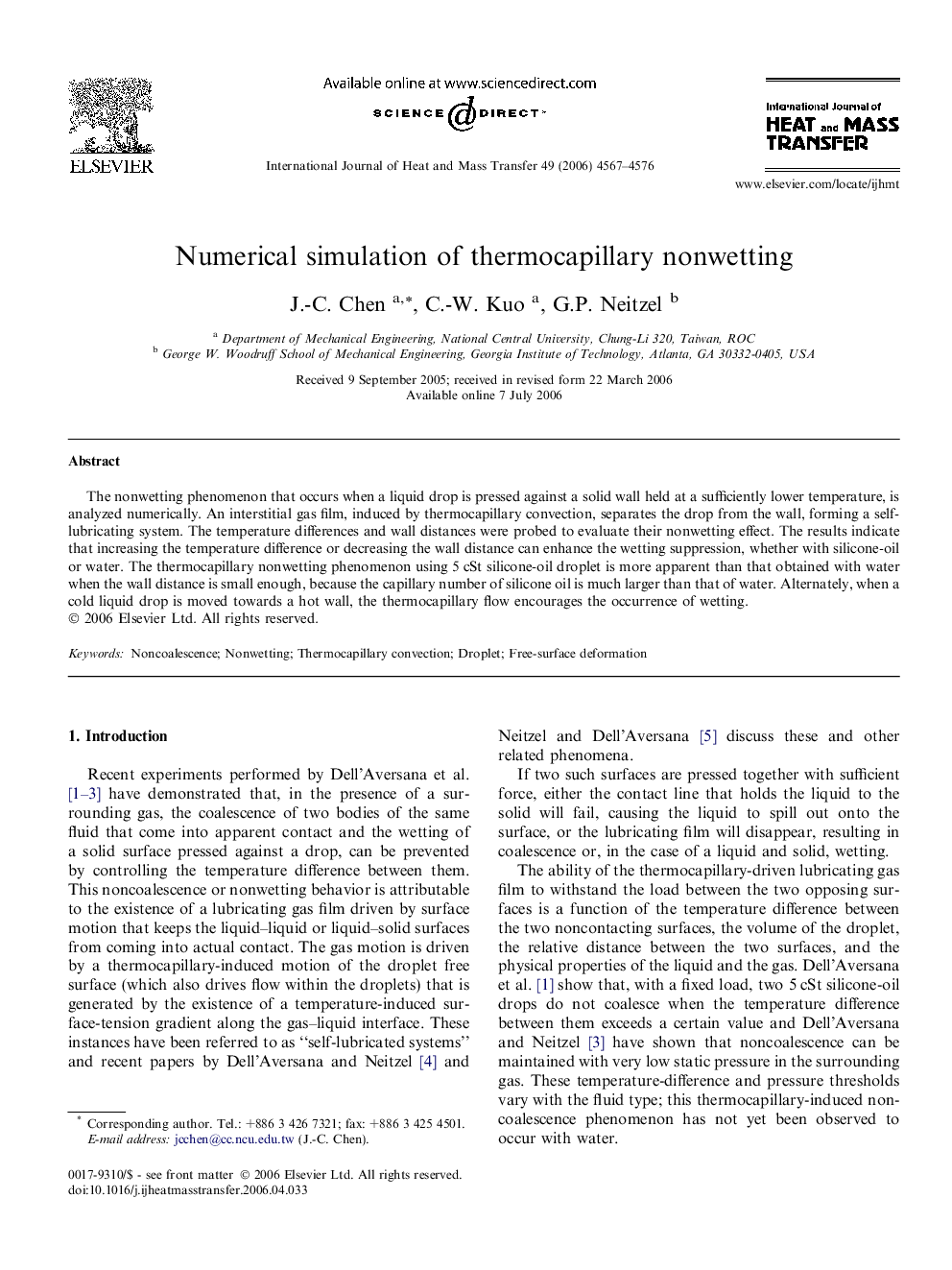| Article ID | Journal | Published Year | Pages | File Type |
|---|---|---|---|---|
| 661919 | International Journal of Heat and Mass Transfer | 2006 | 10 Pages |
The nonwetting phenomenon that occurs when a liquid drop is pressed against a solid wall held at a sufficiently lower temperature, is analyzed numerically. An interstitial gas film, induced by thermocapillary convection, separates the drop from the wall, forming a self-lubricating system. The temperature differences and wall distances were probed to evaluate their nonwetting effect. The results indicate that increasing the temperature difference or decreasing the wall distance can enhance the wetting suppression, whether with silicone-oil or water. The thermocapillary nonwetting phenomenon using 5 cSt silicone-oil droplet is more apparent than that obtained with water when the wall distance is small enough, because the capillary number of silicone oil is much larger than that of water. Alternately, when a cold liquid drop is moved towards a hot wall, the thermocapillary flow encourages the occurrence of wetting.
